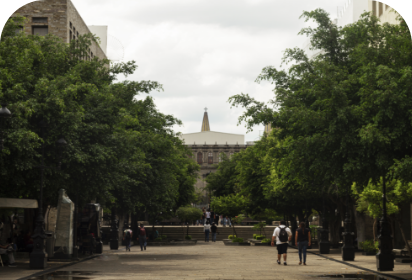
Happy Monday… and… you might want to sit down for this.
I’m just kidding… you can definitely stand. However, the new data I’m about to discuss, or at least how I’m using it, might be a little – albeit unintentionally – controversial.
Anyhow, last week, there was a shocking (tongue firmly in cheek) study released by Opportunity Insights. In it, Harvard researchers confirmed that – wait for it – students from very wealthy families (.1-1% income brackets) are over-represented on elite college campuses, like at Harvard, for example. So, we now have concrete evidence that students from high income families (the top 1%) have been twice as likely to be admitted to, and therefore graduate from, Ivy-Plus schools, when compared with students with similar academic credentials from regular middle class families (like most of our families).
Gee Pete, thanks for the update, but a) wealthy kids at elite schools is not exactly earth shattering news, and b) I’m not in the 1% and I don’t care about Ivies, per se… so.. why does this study matter to me?
I get it… I realize that many of you assumed this AND I (as well as you) already KNOW that individual success is definitely not exclusively limited to students who attend Ivy-Plus schools. We all have multiple examples of people who have attended all kinds of post-high school public and private places of higher learning who have achieved extraordinary success. And yes, I know and have repeatedly argued for years (and with great proof) that it’s not necessarily where you go after high school that defines your identity; rather it’s what you do once there that is the greatest determinant of your ultimate success.
All true, but here’s why I wanted to talk about this data. The Ivy-Plus schools in this report are not specifically basing their admissions decisions on income or family wealth. Not at all. They are, however, using a more ‘subtle’ selection criteria, and more importantly, it’s the same ‘covert’ criteria used by the vast majority of colleges. This study puts empirical data behind this assertion. Finally. And therein lies the importance of the study to you – this is information that can help you strategically choose, get into, and pay less for your education, regardless of your family background or college aspirations.
Never forget that college admissions AND funding are both complex and uber competitive games. When you know the ‘written’ and more importantly, the IMPLIED rules (as highlighted in this report)…then you can know how best to operate within them to win this game. Without this knowledge, you’re at a significant disadvantage.
Good news is that whether intended or not, this study has given us more insight into the unwritten rules that determine an applicant’s prospects at all colleges, not just the Ivy-Plus that were cited.
Here is what the study indicated was clandestinely, empirically important:
- Legacy preferences for children of alumni
- Non-academic factors such as extensive extra-curricular records, personality traits, leadership (in other words, what’s on the application but not necessarily on the transcript)
- Recruitment of athletes in sports other than football, basketball or baseball (think crew, fencing, sailing, water polo, lacrosse, squash).
So, legacy preferences. Children of alumni can often enjoy a significant admissions advantage at the schools – often expensive ones – from which their parents or grandparents have graduated. Hence, the subtle advantage towards wealthy students in the findings. Ok, let’s say this is true at some schools, for now at least (see also below). BUT legacy preferential admissions is NOT the case at most large, public universities (as in there is no legacy advantage at UF and similar schools, for example). In fact, the Harvard study determined absolutely no correlation between legacy or enjoying 1% level wealth when it came to admits at public universities. And, that’s an important consideration when building an options-advantaged college list!
Also important is that this study (like most studies) is backwards leaning in that the findings reflect the past. And preferential legacy admissions practices are becoming a thing of the past. Just this summer, some notable schools, including Wesleyan University, Carnegie Mellon and University of Minnesota announced an end to their legacy preferences. They join Amherst College and Johns Hopkins as two other elite universities that have ended their legacy preferences in recent years. More will follow suit, so this is an area worth paying attention to, especially when considering early admissions options.
As for non-transcript student information, we already know that admissions officers across the country frequently tout their “holistic” approach to admissions, which means that they don’t consider one factor alone, such as GPA, when making decisions. The holistic approach gives admissions officers some cover when faced with questions about why certain students with top grades and/or scores are not admitted. Consider that some estimates suggest that anywhere between 70-92% of applicants at any particular school will have similar grades, rigor and test scores. So how do they really differentiate one qualified candidate from another? They do so by analyzing two specific areas: 1) the student’s extra-curricular record, and (2) how well the student’s application reflects ‘personality traits and leadership potential’, often exclusively gleaned from their essays.
Not surprising that these two factors tend to favor students with means. Students who come private high schools or who live in financially advantaged communities will have greater opportunity and community financial wherewithal to participate in extensive (and sometimes expensive) extra-curricular activities that Ivy-Plus schools value, as well as travel to and from competitions (read: expensive). Holistic admissions ‘save spots’ for students who are successful in niche areas like these, including non-mainstream athletics like crew or fencing (see more on this below), speech and debate, Model UN, robotics, etc.
The other differentiator, i.e., how well a child’s application tells their story, is very a much a function of how much access a student has to college-admissions type guidance and training (yes, test prep included). Great students at large public high schools where the ratios are often upwards of 500 students to one guidance counselor, or whose parents did not themselves go through the US college application process are often at a significantly unfair advantage to their counterparts who get earlier and more frequent access to personalized, college-specific guidance.
Empirically, guidance really matters – both in life, and especially in college admissions success. Tests scores correlate positively with test prep. We knew this already. Now, we also know from this study that we can draw a direct line between students who have a knowledgeable person (whether at home, in their school or independently) to help with the college process and their success with admissions. More specifically, assistance with how a student expresses themself on the application and in their personal statement creates an advantage in the admissions office at elite schools. And frankly, at all schools, this is one area that now has a demonstrable return on the investment.
And finally, as the study suggested, athletic recruiting benefits wealthier applicants. That may surprise many, but it’s important to understand that if you examine all athletic teams on a campus, and not just football and basketball, you’ll see that the rosters of the teams are often comprised of students from wealthier families. That’s because all colleges save spaces on these teams… and the entry fees into high school or club sports like travel lacrosse, hockey, crew, equestrian, tennis, golf, even soccer can be steep. The average fee to join a rowing club, for example, is $5,000 per year, and then parents must pay for travel to attend regattas and other events. The recruitment of athletes falls outside of traditional admissions, which gives such applicants an inherent advantage in the process. This is another area where, if interest were to align with ability, then the investment could certainly show a return, especially at smaller, Division 3 colleges. At many schools, there are spots to be filled by wealthy students, even if their grades and/or scores are lower than average…for example if the student is a great goalie and the lacrosse team needs a goalie.
As always, we can choose to react to information like this in one of two ways. On the one hand, we can see only the challenges. We can get annoyed by the lack of transparency, lack of perceived fairness, and do nothing about it but complain. Not my preference. On the other hand, we can read into the data, look for the opportunities, inflection points, and patterns that can help inform the actions we take. I’ve been doing this type of Applied Research with similar data for nearly two decades, with 1000’s of unique families who have benefited. Just because you’re not in the ‘1%’ does not mean you’re not getting into Harvard – or more importantly – it also doesn’t mean that Harvard is even where you should apply (did you know that there are better schools with better outcome for engineers and business students, for example?). Frankly, there are very few investments like the one you’ll make in higher education, and the choices and effort you make in high school won’t only affect the next four years of your life, but more like the next forty. Understanding your individual opportunities now can reap significant dividends for years to come. And that requires that you take a customized approach for each child.
So, if you take nothing else away from this study, please take this: there is a college seat for every child (more than one), regardless of financial or family circumstance. The key is to understand the ‘game’ and to have a customized strategy for you/your child that helps you ensure a level playing field. With the Common Application opening tomorrow, we are already in the next admissions cycle. Now – before school starts in a couple of weeks – is the time for you to learn where your best opportunities lie.
If you want are entering 11th or 12th grade especially, and you/your child want to enjoy every fair advantage that they deserve, and you’re wondering where the hidden advantages may lie, then let’s have a chat. While I cannot make any admissions guarantees, I can confirm that over the years, we have supported students who have been admitted to every single one of the Ivy-Plus schools, as well as each of the top state flagships like UF, Michigan, UNC, UVA, UC-Berkeley, UCLA and others. This doesn’t happen without enormous effort, dedication, and commitment, both on our part and that of our students and their parents.
If you’re up to the challenge, then I’ll be happy to show you how we operate. I look forward to that opportunity.



